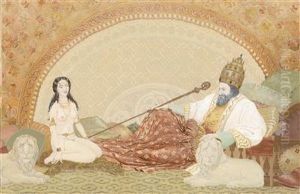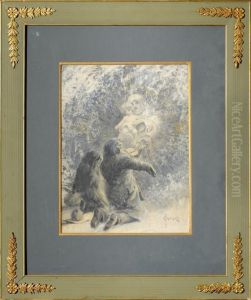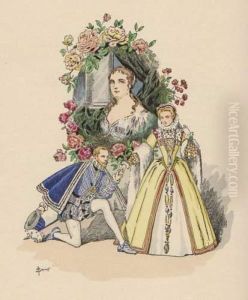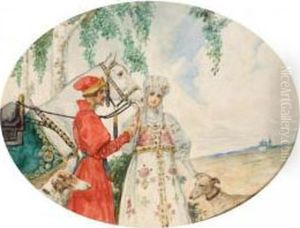Sergei Sergeevich Solomko Paintings
Sergei Sergeevich Solomko was a Russian painter, illustrator, and graphic artist, born on August 24, 1867, in the Russian Empire. He was known for his watercolors, book illustrations, and postcard designs. Solomko came from a noble family and had the opportunity to study at the Imperial Academy of Arts in Saint Petersburg, one of the most prestigious art schools in Russia at the time.
Solomko's artistic career was marked by his versatile style and his ability to work in various genres, including historical and genre painting, as well as portraiture. He was particularly admired for his detailed and refined watercolor technique. In addition to his work as a painter, Solomko became famous for his illustrations in literary works and magazines, which showcased his narrative skills and his capacity to capture the essence of a story through imagery.
Throughout his career, Solomko was influenced by the Art Nouveau movement, which was characterized by elegant lines and a decorative approach to art. His illustrations often featured elements of Russian folklore and mythology, and he had a knack for depicting scenes with a romantic and sometimes whimsical quality. Solomko's work as a postcard artist was particularly notable during the early 20th century, a golden age for illustrated postcards.
During the Russian Revolution of 1917 and the subsequent civil war, the country underwent dramatic changes that affected the arts and the lives of artists significantly. In the wake of the revolution, Solomko emigrated from Russia and eventually settled in Paris, France, where he continued to work and contribute to the Russian emigre cultural scene. Despite the challenges of displacement, he maintained a successful career as an illustrator, producing works that were popular among the Russian diaspora and beyond.
Sergei Sergeevich Solomko passed away on January 27, 1928, in Paris. Although he spent his later years far from his homeland, his artistic legacy continued to be appreciated for its beauty and craftsmanship. His works are a testament to the rich cultural heritage of pre-revolutionary Russia and offer a glimpse into the world of Russian art at the turn of the 20th century.



















